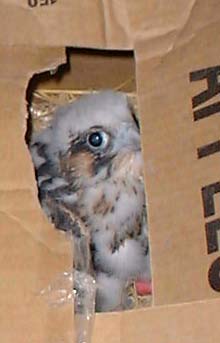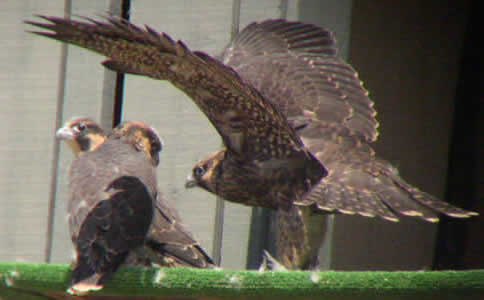|
YLR
Home | Overview
| Animals
| Plants | Research
| Geology
| Peregrine Falcons
| Sounds
of YLR Seasons
| Tours |
Volunteer | Directions
to YLR | Contact
Us
|
| Peregrine Falcons at Younger Lagoon Reserve |
 Little boy "Red", banded, radio tagged and ready to move to the the hack box. |
|
Peregrine falcons in the United States were once near extinction, and when the Santa Cruz Predatory Bird Research Group (SCPBRG) was formed in 1975 just a handful of productive nests were known in California. But due to the ban on the use of the pesticide DDT in many places and the efforts of organizations like the SCPBRG the peregrine falcon has experienced a remarkable resurgence in California and other parts of the West coast and was removed from the Federal Endangered Species List in 1999. As part of their on-going peregrine recovery and monitoring program The Santa Cruz Predatory Bird Research Group releases captive-bred young peregrine falcons into the area around Younger Lagoon each year. |
|
The
hack box was opened and the young peregrines emerged for their first
flights. This photo was taken during the April, 2005 release.
 |
|
Peregrine Links: Peregrine
Falcon species info |
| Younger Lagoon habitat provides an ideal setting for young peregrines to make the six-week transition from captive birds to wild independence. Here, peregrines find updrafts along the cliffs to support early attempts at flight, and a diversity of bird life in the estuary and along the coastline to practice aerial pursuit maneuvers. Members of the public who are good observers can watch the falcons in the vicinity of Younger Lagoon for up to three months following their release, before they "peregrinate" to other areas and become members of the wild population. |